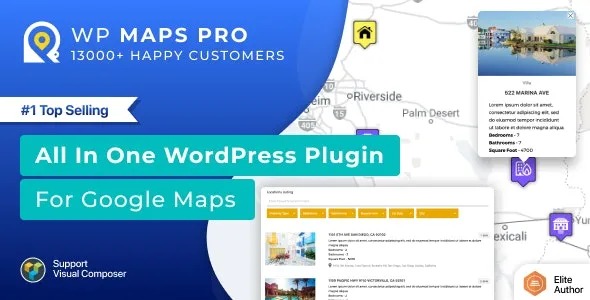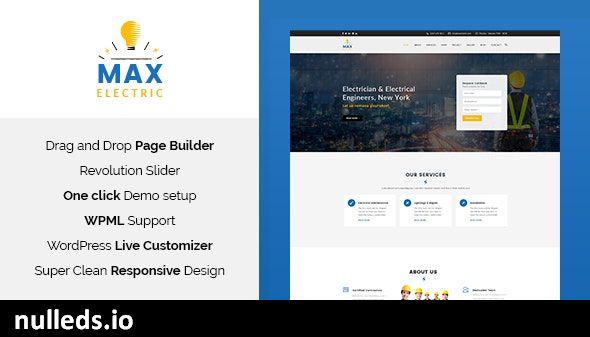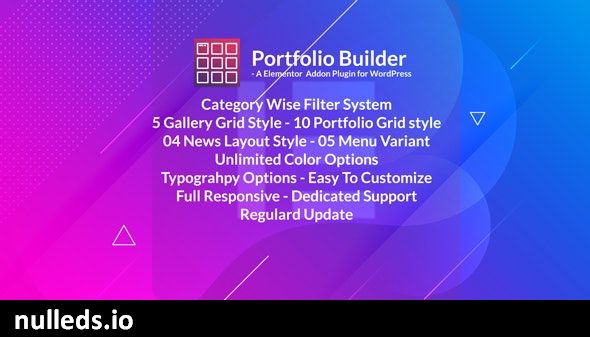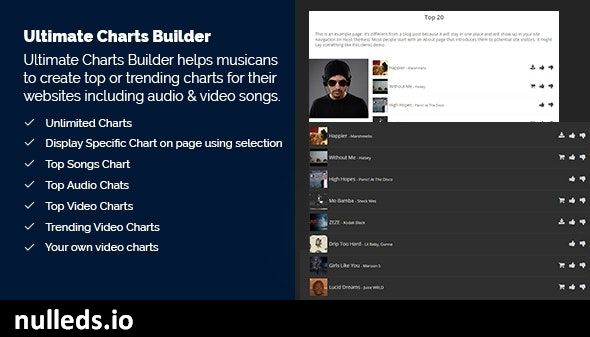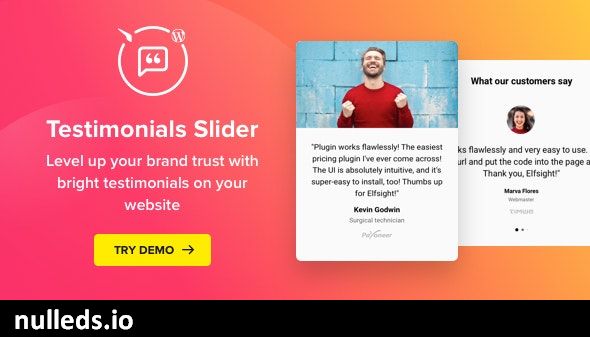Download Latest v5.8.1 Advanced Google Maps Plugin for WordPress
Download Advanced Google Maps Plugin from here >>>
This Плагин Google Maps WordPress is the most advanced Google Maps plugin ever. We developed it based on feedback from thousands of valued customers.
High-quality and useful add-ons to enhance the user experience!
We also provide advanced extensions/add-ons for advanced Google Maps plugins, which implement much-needed and useful functions.These add-ons can work smoothly with our main plugin to produce very useful output/content and display it in a beautiful way on the Google map created by the main plugin.Customers love it, let’s take a look!
Customized service
We have extensively customized all plug-ins in our product portfolio to meet the specific needs/requirements/business goals of our customers.Please feel free to contact us to discuss your custom requirementsHereOr you can email usSupport @flippercode. computer. Our team will get back to you as soon as possible.
Features
- Easily filter locations by custom fields, taxonomies, and location data. Use the backend to create multiple filters.
- Display posts, pages, or custom post types on Google Maps. You can display multiple post types on one Google map.
- Use meta boxes or your own custom fields to easily assign locations to your posts. You can also use the advanced custom field plugin to assign locations to your posts.
- Display post information in the information window, such as title, content, excerpts, featured images, categories, tags, custom fields, or custom taxonomy. You only need to use placeholders to display these data.
- Display the post list below the map and display the post information in the list. You can easily customize the html to integrate your own design.
- Display posts or locations below the map in grid or list format. Visitors can switch formats on the front end.
- Add any amount of information to the location or mark details and easily display them in the information window. For example, fax, telephone, e-mail, website, etc.
- Import unlimited location data from CSV. You can import any number of fields in this location. Use csv to assign categories to your location. Supports all CSV delimiters.
- Assign multiple categories to a location and allow visitors to filter by category.
- Choose to redirect to a location or display an information window message when the tag is clicked for two posts or manually added locations.
- A complete setlistingModules for filtering, sorting, printing, and advanced search boxes, used to filter posts or locations by zip code, address, city, country/region, post tile or location title and category.
- The list module is based on ajax to achieve the fastest search experience and usability.
- Search for nearby posts or locations within a certain range. Customize the radius setting at the back end.
- Filter locations/markers by category on the map. The ability to filter to multiple categories at once.
- Sort the list in ascending and descending order by title, address, or category.
- Print a list of filtered locations. You can control the printing options through the backend.
- You can modify the placeholder of the location list data without any programming.
- Enable or disable search forms, category filters, printing options, and sorting options on the backend.
- The list module supports paging. You can use the backend settings to determine the number of posts or positions per page.
- Ask the visitor for the starting location and ending location to show the route direction. Click the marker to automatically fill in the starting position. Get information about driving, biking, walking, or public transit directions.
- Visitors can get route directions in miles and kilometers.
- Display the starting position input as a text box or a selection box to fill your position.
- Display the end position input as a text box or select box to fill your position.
- Ability to display the default start and end locations in the route tab.
- Use the Google location api to get nearby locations within a specific radius.
- Use the Google location api to find the display circle around the facility.
- If you have too many locations, enable tag clusters. Just activate and the plugin will handle the rest.
- You can apply tag clustering on posts and locations. The tag cluster will be automatically updated during filtering.
- Select the marker cluster icon and mouse hover icon to improve the user experience. 10 marker cluster styles available
- Select the marker cluster grid size and maximum zoom level.
- Create routes on the backend and display them on the frontend. You can specify a color for each route. Visitors can use the route filter form to show/hide routes on the front end.You can display multiple routes on Google Maps.
- Customize the stroke color, stroke opacity, stroke thickness, travel mode, unit system, start position, end position and waypoints to create a route.
- Make the route draggable and optimize the waypoints to suggest the best route.
- Assign waypoints to the route. A list of searchable locations has been added to quickly assign waypoints to routes.
- The administrator can draw any number of circles, rectangles, polygons or polylines and display them on Google Maps. The shape is clickable.
- The information window is displayed when the shape is clicked.
- Redirect to a location when you click the shape.
- Select to delete a single shape or modify the properties of the shape with a single click.
- Draw any number of shapes on the map and save them together.
- Use your own coordinates to draw the shape.
- Apply the great Google Maps style from snazzymaps. com just simply copy and paste.
- You can also create your own custom styles for roads, labels or geometry for your Google Maps skin.
- Obtain the location from an external data source, such as a custom table or API, and use a hook to automatically assign it to the map.
- When you enter the address in the input field, you can automatically get the latitude, longitude, city, country, state, and postal code.
- Manage parent and child categories.
- Assign your own tags to categories or choose from +500 ready-made tags.
- Able to search in the icon list to find a suitable icon and quickly assign it to a category.
- Use placeholders, such as {marker_title},{marker_address},{marker_message},{marker_latitude},{marker_longitude}, to customize the body of the message window message.
- The information window is displayed when the marker is clicked or the mouse is hovered.
- Open the info window when loading the page without clicking or hovering over the mouse.
- Use programming to modify the content of the information window through hooks.
- The information window is closed when the marker is clicked. You can disable this feature on the backend.
- The bounce animation is applied when the marker is clicked or the mouse is hovered.
- When they are displayed on Google Maps, a placement animation is applied to the marker.
- Change the zoom level of the map when you click the marker for better visibility.
- Display multiple KML/KMZ layers on the map.
- Use a fusion table to display large amounts of data on the map. The best way to manage large amounts of data.
- Use the traffic layer to display real-time traffic conditions and overlays.
- Use bicycle layers to add bicycle path information to your map.
- Display the physical map according to the terrain information.
- Ability to display multiple layers together on the map.
- Set height, width, zoom level, map type, enable/disable scroll wheel, draggable properties and apply 45° image.
- The map is fully responsive and automatically adjusts according to the device.
- (Optional) Specify the center latitude and longitude for the map. By default, the center position is automatically calculated based on the position assigned to the map.
- Center the map based on the visitor’s current location.
- Display a circle around the center position to highlight the center position. Set the properties of the circle.
- Use the searchable list to assign multiple locations to the map. If you have hundreds of locations, the list will be paginated.
- Show/hide zoom control, full screen control, map type control, scale control, street view control, overview map control and determine the position of the control on the map.
- Hide the tags when the page loads and show them only after filtering.
- Show the street view of the location. Set the POV Heading and POV Pitch of the street view to customize the location of the street view output.
- Display the overlay and customize the border color, overlay width, overlay height, font size, border width and border style.
- The easiest way to limit the pan/drag so that the map stays within a certain range using the limit pan setting.
- Use URL to easily display GEOJSON data.
- Display the map in a mixture of normal view and satellite view.
- Use widgets to display Google Maps in the sidebar. You can display any number of maps in the sidebar.
- Show category, direction, route and nearby labels together on Google Maps.
- Use the category name to display the location count. And sort the categories by the number of allocated locations.
- Keep backups of locations, routes, maps, and categories.
- You can assign permissions to your users to manage your location, category, route, and map.
- Ability to use external databases or sources to add markers on Google Maps using the new filter wpgmp_marker_source.
- Add multiple Google maps on the page. Each map has its own attributes.
- Cross-browser compatible plug-ins. Fully tested on IE8, IE9, IE10 and all other major browsers
- Multi-language support uses ..po files.
- Multi-site is enabled and able to activate it within the network.
GDPRコンプライアンスGoogleマッププラグイン
Supported hooks
If you are a developer and want to implement your own custom features on the map or import locations from external sources or display custom fields in the info window or modify the location list, you can easily do this with the help of hooks.ViewGoogle Maps hookexample.
Changelog
Version 5.8.1
New - WP Maps Pro Templates System integrated with help of hooks.
Version 5.8.0
Fix - Cookie consent issue resolved.
New - Set map width in pixels and percentages.
New - Added filters for database operations before insert/update.
Fix - Resolved fatal error when categories weren’t assigned.
Fix - Empty geotag posts no longer trigger unnecessary queries.
Suggestions
We encourage all current and future customers to send us the features they want to see in the next version.We are passionate about this product and are committed to making it valuable to everyone.
Advanced Google Maps Plugin for WordPress [Free Download]
Advanced Google Maps Plugin for WordPress [Nulled]
WordPress » Utilities
